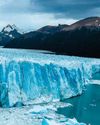Super Sonic Stealth Jets
How It Works
|Issue 110
How the fifth generation of fighter aircrafts will conquer the skies.

We’ve come a long way from the Wright brothers. Their first powered flight in 1903 consisted of a rudimentary wooden glider powered by propellers that reached a modest speed of 43 kilometres per hour. Now, more than a century later, a fleet of advanced supersonic stealth fighter jets are taking to the skies, capable of going undetected by radar and reaching speeds far in excess of the speed of sound – Mach 1 – which is around 1,235 kilometres per hour depending on air pressure and temperature.
The US was the first country to develop a so-called fifth-generation fighter with its F-22 aircraft, loosely defined as being a jet that has advanced stealth capabilities despite being armed, sleek designs to carve through the air and the capability of cruising at supersonic speeds without the use of fuel-hungry afterburners. But while the US currently dominates the field, Russia and China are quickly making headway, and many are already excited about what’s next on the horizon, with artificial intelligence and autonomous flight all expected to play a part in the future of fighters.
Stealth fighter jets are iconic in their design and capabilities. They can enable rapid response to conflict, striking targets while remaining almost completely undetected. Their smooth and sleek bodies hide powerful weaponry under their skin, with the jets designed to have as few obtrusive parts as possible to give them a low radar cross-section (RCS). Powerful engines enable speeds of up to Mach 2, and pilots are given advanced helmets and technologies to help them locate and destroy targets.
This story is from the Issue 110 edition of How It Works.
Subscribe to Magzter GOLD to access thousands of curated premium stories, and 10,000+ magazines and newspapers.
Already a subscriber? Sign In
MORE STORIES FROM How It Works
How It Works UK
20 WEARABLE HEALTH TRACKERS
Whether you strap a wellness coach to your wrist or weave subtle sensors into your clothes, these devices are revolutionising how we track our health
9 mins
Issue 210
How It Works UK
SUPERPOWERED PLANTS
The world of plants is vibrant and diverse, just like this book.
1 min
Issue 210
How It Works UK
SECRET STORIES OF LOST BEASTS
We're all aware of the mighty dinosaurs that once roamed Earth, but there are so many weird and wonderful species that have been lost to time.
1 min
Issue 210

How It Works UK
ALL ABOUT BLIMPS
Is it a bird? Is it a spaceship? No... it's a non-rigid airship
2 mins
Issue 210
How It Works UK
SUPER QUESTERS MISSION: RAINFOREST MAGIC
Join adventurers Leo, Lilli and Bea as they transform into superheroes and journey to the rainforest in the pursuit of knowledge.
1 min
Issue 210

How It Works UK
HOW THE MIGHTY MAMMOTH RULED THE ICE AGE
Meet the prehistoric giants that roamed the Arctic Circle thousands of years ago
4 mins
Issue 210
How It Works UK
Have they found LIFE ON MARS?
Although it's by no means certain, scientists are slowly accumulating evidence that life once existed on the Red Planet
2 mins
Issue 210

How It Works UK
HOW FAST DO GLACIERS MOVE?
The speed at which a glacier flows depends on its mass, the depth and slope of the underlying rock bed and friction.
1 min
Issue 210

How It Works UK
HOW IN-FLIGHT WI-FI WORKS
This technology allows you to scroll to your heart's content while killing time at cruise altitude
3 mins
Issue 210

How It Works UK
HOW WIGWAMS WERE BUILT
Discover the construction and living conditions inside these traditional domed dwellings
1 mins
Issue 210
Translate
Change font size

